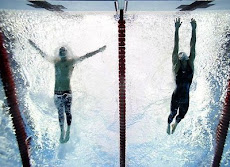
Some active video games, such as Wii Sports and Wii Fit, may equate to moderate exercise, according to latest research. One Japanese study showed that around one-third of the "virtual physical activities" evaluated require an energy expenditure of 3.0 METs or more, considered to be moderate-intensity exercise. METs, metabolic equivalent values, are a standard method of evaluating energy expenditure/cost of activities. The American Heart Association's exercise guidelines show moderate intensity is 3.0 to 6.0 METs. An adult walking at 5 km per hour on a level surface is expending about 3.3 METs.
Researchers found:
- Nine activities had less than 2 METs.
- Twenty-three activities had 2 - 3 METs.
- Nine activities had 3 - 4 METs.
- Five activities had more than 4 METs.
Wii Sports are a collection of five simple games based on boxing, golf, tennis, bowling and baseball. Boxing is the best activity to increase energy expenditure, around 4.5 METs, according to the study findings. Golf, bowling, tennis and baseball are 2.0, 2.6, 3.0, and 3.0 METs, respectively.
Wii Fit includes yoga, resistance/strength training, balance and aerobic exercises with more than 40 different activities, including push-ups, torso twists and single leg extensions. The 'single-arm stand' (Wii Fit), 5.6 METs, is regarded as a difficult resistance exercise and the highest energy cost. Intensities of yoga and balance exercises were much lower than those of the resistance and aerobic exercise, but are still effective in improving flexibility and in fall prevention.
Another research study also suggests that active video games present a good alternative to medium intensity exercise for children. When compared to watching television, calories used while walking will increase 2 to 3 times. Similar rates of energy expenditure, heart rate and perceived exertion were obtained from playing the games Wii Boxing, Dance Dance Revolution (Level 2) or walking at 3.5 mph (+-5km/h). Overall, the energy expenditure during active video game play was comparable to moderate-intensity walking.
Over 60 million sets of Wii sports and Wii fit have been sold worldwide.

The Gravity fitness centre at Le Parker Meridien hotel in New York on West 57th Street decided they would transform their old squash court into a Wii Fit and Wii Sport room so that New Yorkers with small apartments have a place where they can comfortably play on the Wii. Not only does this Wii installation have a nice digital projector, Wii Fit and Wii Sports, they even have a personal trainer. A Wii Sports session is pretty expensive, you pay $120 but you get personal one-on-one coaching from the human coach while you give the best of yourself in Wii Sports or Wii Fit. Some players claim that the personal trainer really motivates you to do the best you can. But there’s also a cheap $50 one hour session without the helpful personal trainer.






















